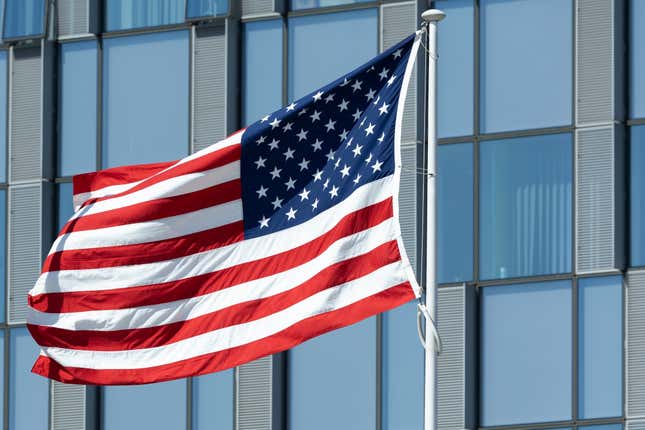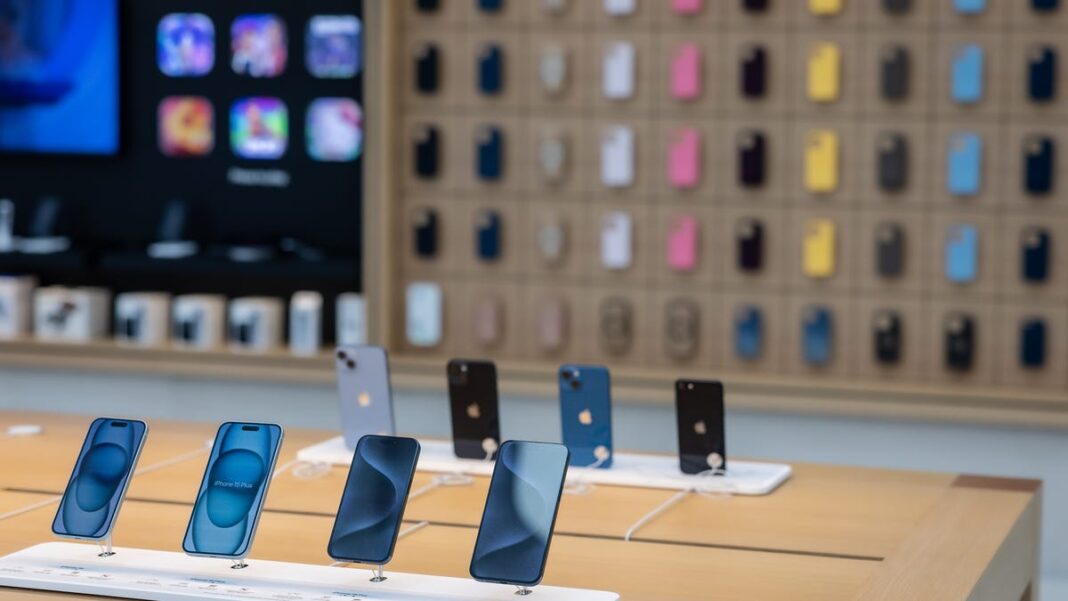## Behind the Shiny Screen: Unmasking the Global Network that Builds Your iPhone
You hold it in your hand, sleek and powerful, a symbol of innovation and technological prowess. But have you ever stopped to consider the journey your iPhone took to get there? The intricate dance of global supply chains, the hands that assemble its intricate components, the countries that contribute to its very existence – it’s a story woven into the fabric of our increasingly interconnected world.

A recent article on Quartz sheds light on this fascinating, and often hidden, story: revealing the seven crucial countries that Apple relies on to build the iconic iPhone. From the rare earth minerals mined in distant lands to the sophisticated factories churning out millions of units, this exploration delves into the complex web of production that empowers our digital lives.

US-China Tensions: How Trade Wars Impact iPhone Production
The intricate web of global supply chains underpinning the iPhone is increasingly strained by escalating US-China tensions. Trade wars, characterized by tariffs and retaliatory measures, directly impact production costs and timelines, creating uncertainty for both Apple and its manufacturing partners.
Take, for instance, the Trump administration’s trade war with China, which saw the imposition of tariffs on billions of dollars worth of Chinese goods, including components used in iPhone production. Unionjournalism reported at the time that these tariffs forced Apple to absorb increased costs, which ultimately led to price hikes for consumers. While the Biden administration has eased some of these tariffs, the underlying geopolitical tensions remain, casting a shadow over the future of iPhone manufacturing.
The Race for Technological Dominance: The Role of Government Subsidies
Beyond trade wars, the global race for technological dominance fuels competition for talent, innovation, and manufacturing prowess. Government subsidies play a crucial role in this race, incentivizing domestic industries and supporting strategic technologies like semiconductor manufacturing, a key component of the iPhone.
For example, the US CHIPS and Science Act, a bipartisan legislation passed in 2022, allocates billions of dollars to boost domestic semiconductor production, aiming to reduce reliance on foreign suppliers like TSMC, which manufactures many of the iPhone’s processors in Taiwan. This move reflects a broader geopolitical strategy to secure critical technologies within national borders.
A Delicate Balancing Act: Navigating Trade Agreements and National Interests
Governments worldwide are grappling with the delicate balancing act of fostering economic growth through international trade while safeguarding national security and interests. Trade agreements, while promoting open markets, can also be exploited by adversaries to gain an edge in critical industries like technology.
The situation with the iPhone exemplifies this complex dilemma. While global trade allows Apple to source components from various countries, it also creates vulnerabilities in the supply chain, susceptible to political pressures and disruptions. This necessitates a strategic approach to trade policy that considers both economic benefits and national security concerns.
The Impact of Tariffs on Consumers: A Case Study in iPhone Pricing
Tariffs, a key weapon in trade wars, directly impact consumers through higher prices. When tariffs are imposed on components used in iPhones, the cost of production increases, leading Apple to raise the retail price of the device.
The Trump administration’s tariffs on Chinese goods, including components for iPhones, resulted in price increases for consumers. A 2019 study by the Federal Reserve Bank of New York found that tariffs imposed on Chinese goods, including those used in iPhone production, increased the cost of an iPhone by an average of $200. This highlights the real-world consequences of trade tensions on consumers.
The Future of Tech Manufacturing: Reshoring vs. Globalization
As geopolitical tensions rise and supply chain disruptions become increasingly frequent, the debate over reshoring versus globalization intensifies. Reshoring, the relocation of manufacturing back to home countries, is gaining traction, driven by concerns about dependence on foreign suppliers and the desire to create domestic jobs.
However, globalization, with its benefits of lower production costs and access to a wider pool of talent, remains a powerful force. Apple’s complex global supply chain, spanning multiple countries, demonstrates the challenges and complexities of reshoring. The future of tech manufacturing likely lies in a hybrid model, where companies strategically balance reshoring efforts with global partnerships, ensuring resilience and adaptability in an increasingly volatile world.
The Human Element: Labor Practices and Ethical Considerations
Beyond the geopolitical and economic considerations, the human element lies at the heart of iPhone production. Millions of workers worldwide, from assembly line technicians to engineers, contribute to the creation of this ubiquitous device. Ensuring fair labor practices, safe working environments, and ethical sourcing are paramount concerns.
The Global Workforce Behind the iPhone: A Look at Labor Conditions
The vast majority of iPhone assembly takes place in factories in China, primarily run by Foxconn, a Taiwanese electronics manufacturing giant. Conditions in these factories have been subject to scrutiny, with reports of long working hours, low wages, and safety concerns.
Apple has faced criticism for its labor practices in its supply chain, prompting the company to implement stricter supplier audits and ethical guidelines. However, ensuring transparency and accountability throughout the sprawling global supply chain remains a persistent challenge.
Scrutinizing Factories: Ensuring Fair Wages and Safe Working Environments
Apple’s supplier code of conduct mandates fair wages, safe working conditions, and the prohibition of forced labor in its supply chain. The company conducts regular audits of its suppliers to ensure compliance.
However, independent organizations, such as the Fair Labor Association (FLA), have raised concerns about the effectiveness of these audits and the need for greater transparency.
The Challenge of Transparency: Auditing Supply Chains for Ethical Practices
Auditing a global supply chain as complex as Apple’s is a daunting task. The sheer number of suppliers, subcontractors, and manufacturing sites makes it difficult to ensure complete transparency and accountability.
Apple has taken steps to improve transparency by publishing supplier lists and audit reports, but critics argue that more needs to be done to address the root causes of labor abuses and ensure that workers’ rights are fully protected.
Beyond the Factory Floor: The Social and Environmental Impact of iPhone Production
The environmental and social impact of iPhone production extends beyond the factory floor, encompassing the entire lifecycle of the device, from raw material extraction to e-waste disposal.
E-Waste and Recycling: Addressing the Environmental Footprint
The global proliferation of smartphones has led to a surge in electronic waste (e-waste), a major environmental challenge. Discarded iPhones contain valuable materials, but also hazardous substances that can contaminate soil and water if not disposed of properly.
Apple has implemented recycling programs and initiatives to reduce the environmental footprint of its products, but the scale of e-waste generation requires a collective effort from consumers, governments, and manufacturers to develop sustainable solutions.
Supporting Sustainable Manufacturing: Apple’s Initiatives and Challenges
Apple has made commitments to reduce its environmental impact and promote sustainable manufacturing practices. The company has invested in renewable energy sources, implemented stricter environmental standards for its suppliers, and launched programs to encourage product repair and recycling.
However, achieving complete sustainability in a globalized supply chain remains a complex and ongoing challenge. Apple faces pressure from environmental groups and consumers to do more to address the environmental and social impacts of its products.
Conclusion
Apple’s iPhone, a symbol of technological innovation and global connectivity, is meticulously crafted from the resources and labor of seven key countries. As the article details, from the lithium mines of Chile fueling its battery to the Taiwanese factories assembling its intricate components, the iPhone’s journey reflects a complex global supply chain.
This intricate web of production raises critical questions about economic interdependence, labor conditions, and environmental sustainability. While these countries benefit from the economic opportunities created by Apple’s reliance, the article highlights potential downsides, including worker exploitation and environmental degradation. As technology continues to advance and demand for smartphones grows, understanding the human and environmental costs embedded in our devices becomes increasingly crucial.
Ultimately, the iPhone’s global footprint compels us to confront the ethical dilemmas inherent in our consumer culture. Are we, as consumers, willing to accept the potential sacrifices made in the pursuit of technological convenience? The answer lies not just in the hands of tech giants like Apple, but in the choices we make as individuals and as a society.
